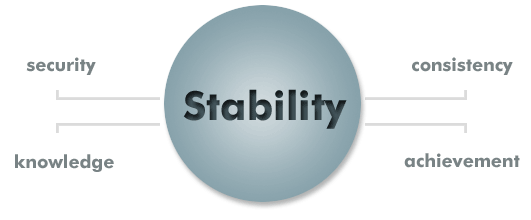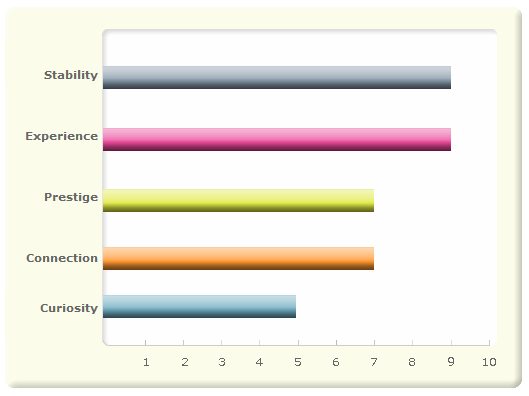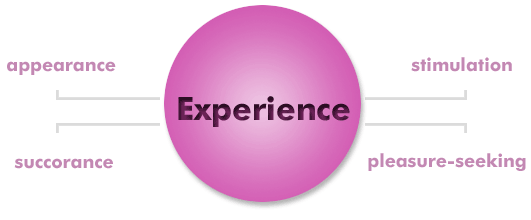Tests Results
- Your Sexual Persona
- Your Personality Type
- Your 5 Factor Personality Report
- The Brain Test
- Emodes Original Inkblot Test
- Comprehensive IQ Report
- Career Interest
- Your Chakra Reading
- Your Emocional IQ Report
- What's Behind Your Emotions?
- Your Enneagram Report
- Your Motivation Report
- Your Picture Personality Report
- Your Plan for Happiness Report
- Your Destity Reading
- The Best Qualites Report
- Your Career Interest Report
- Your Freudian Analisis Report
- Your 7 Secrets of Success Report
- Your Career Personality Type Report
- Your Corporate Culture Report
- Fear Report
- Your Multiple Intelligences Report
- Your Picture Personlity Report
- Your Power Quotient Report
- Your Social Networking Report
- Your Subconscious Mind Analysis
- Your Super IQ Report
- Your True Talent Report
- Your Right Job Report
Who excuse his actions by destiny and indulge yourself, this deserves to make mistakes.
Cum sociis natoque
— Seneca the Younger,
Lucius Annaeus Seneca, called Philosopher,
(4 BC - 65 AD)
Motto
Almost anyone fate did not bestow great and continual success. Only the happiness that comes easily, is persistent and accompanied us to the end. Seneca the Younger (born Lucius Annaeus Seneca, called. Philosopher, 4 BC - 65 AD)
Your Motivation Report
Rafal, your Key Motivator is rooted in your need to ensure your life is established and secure. You're driven by what experts call Stability.

You are concerned about stability in many different facets of your life. You take comfort in knowing you're prepared for your future and as such, take the necessary steps to make your life more predictable. Whether that means setting up a good savings account, educating yourself so you're prepared for your next job or child, or physically safeguarding your home with alarms or new storm windows, you do well when stability is in your sights. It's not that you can't handle adversity; it's just that you prefer to be prepared for it.
What this means about you
What does this really mean for you in your life? Research indicates there are 5 key motivators in life: Prestige, Stability, Connection, Experience, and Curiosity. This test measures you on all 5 of those motivators by giving you a score on the Motivation Scales. From the way you answered the questions on the test, we calculated — your Key Motivator — the thing that most often motivates you to get something done.
Your score on the Stability scale indicates that you keep a close watch on your personal sense of security, whether you find it by closely managing your finances, working hard to increase your knowledge and marketable skills, keeping your home safe, or making sure your body is in shape and ready to face life's challenges.
Your desire to be "safe and secure" may be an internal drive that you were born with or it could have developed through external influences that evolved through your life experiences. For example, your drive for Stability could have been reinforced in your childhood if your attention was brought to your level of security — whether you had an exceptionally stable or instable childhood in terms of home life, health, travel, and others. Everyone is motivated by Stability to some extent, but the way in which this manifests itself is dependent on an individual's psychological make-up, and for you, it's a driving force.
Many people around you will appreciate your reliability and admire your straight-forwardness. You are likely known for your strong sense of character which stems from your strong knowledge base, and sincere desire to be able to give people good, solid information — the kind of information you yourself rely on. You put your heart into creating a solid foundation for yourself and your family to grow from, and you are happy to share your knowledge and advice with others who have similar values.
While some people will show their appreciation by returning your favor, others may try to take advantage of your consistent and dependable nature. While you spend a lot of effort creating a safe environment for yourself and those you care about, try to identify those people who are gaining shelter from you that are not really your responsibility and rethink those relationships.
How this plays out in your life
When you have goals that are particularly important to you, you'll get closer to reaching them when you use strategies related to your Key Motivator. Remember, your Key Motivator is the dominant force that drives you to make big, and little, steps in your life. Your body and mind are more finely attuned to your Key Motivator, so learn to use them as a means to the desired end. To illustrate this point, we've created a scenario to show you where your Motivator can come into play.
Imagine that you are having trouble saving money toward a vacation this year. You've run the numbers, you've checked your calendar, you've called friends to accompany you, you've decided where you want to go, and yet, it's still not coming together. Nothing is more frustrating than not being able to solve a problem you know you're capable of beating. Tap into your Key Motivator and see if you can find the solution to saving that money faster.
More than anything else, you know you're motivated by a sense of security. Learn to use that as the key motivator to help you take the vacation you've been dreaming of. If financial stability is your main concern, shift your thinking about what a vacation means for you. Reason with yourself that a vacation is more than frivolous time spent on frivolous activities. Research has proven that taking vacations is also an investment in one's mental and emotional health. When you look at it that way, it makes more sense and will incent you to work harder to save the money you need for it. When you shift your focus from the chore of saving money to the duty of saving money for a vacation sure to have long-term benefits for you, you'll find it much easier to do.
That's a little bit about how you can use your Key Motivator to your advantage. But remember, there's at least a little bit of all the motivators in each of us. While your Key Motivator is what you tend to rely on, you will fall back on others depending on the situation or circumstance.
Understanding what your top motivators and de-motivators are will allow you to be more competent in communicating your goals and desires. It will also give you more confidence and control over the changes that you make in the future. To fully exploit this knowledge, we've taken a look at how you answered all the answers on the test. Based on the 5 core motivations identified by research, we've generated your personal Motivation Map — a unique pattern of how your motivators fit together. Learn how to read it, and get ready to reach those goals that have been escaping you.

Stability: The Stability Motivation Scale measures the intensity of your needs to be safe, to understand cause and effect relationships, to avoid ambiguity and uncertainty, and to accomplish difficult tasks through skill. You scored 9 on the Stability Motivation Scale.
Experience: The Experience Motivation Scale measures the intensity of your needs to be attractive, to indulge in sensual pleasure, and to be stimulated by your environment or activity. You scored 9 on the Experience Motivation Scale.
Prestige: The Prestige Motivation Scale measures the intensity of your needs to be publicly admired, to win in competitive situations, to be in a position of authority, or to have enviable possessions or wealth. You scored 7 on the Prestige Motivation Scale.
Connection: The Connection Motivation Scale measures the intensity of your needs to belong to a group, to have fun, to care for others, to be the center of attention, and to be publicly recognized for your efforts. You scored 7 on the Connection Motivation Scale.
Curiosity: The Curiosity Motivation Scale measures the intensity of your needs to be independent, to understand how things work, to have new and diverse experiences, and to explore your physical relationships. You scored 5 on the Curiosity Motivation Scale.How to use your Motivation Map
Your personal Motivation Map is unique to you. It is almost like a motivational fingerprint. Some people will score high on all 5 of the different motivation scales. That simply means that they are easily motivated by a number of different end-goals. Others might score the same number on two or more of the motivation scales. That simply means that they are equally as useful, or not, to you. And still others will score high on some scales and lower on others.
Understanding your scores on your Motivation Map is important. If you score high on 4 different scales, you know that there are at least 4 different baits you can use to motivate yourself to any given goal. In general, no one motivation is better than the other. But within a given situation or circumstance, you might find that one kind of motivator is much more effective than another.
For example, your Key Motivator is Stability. But it's possible that your Key Motivator won't work in some situations. Luckily, your Motivation Map provides you with alternatives. When your Key Motivator doesn't seem appropriate, or doesn't help you achieve a goal, look to your Secondary Motivator, your second-highest scoring motivator. Your Secondary Motivator, Experience, is a good backup when circumstance dictates your Key Motivator isn't enough.

Considering more than one of your motivators can lead to an even more fulfilling goal. Suppose a friend of yours suggests that you join a baseball league together this season. You want to do it because you like this friend and you think it might be fun. However, you have reservations about how dedicated you will be to practice for the games. Since you know you will have trouble motivating yourself to practice, now is the time to tap into your Motivation Map. In this situation, your Key Motivator may call on your desire to keep your body healthy through exercise — you want to keep your body in good shape so you can avoid getting sick or developing arthritis due to lack of exercise.
However, that may not be enough to get you down to the ballpark outside of your game time. Instead, try combining your top two motivators. If you add Experience to Stability, you might find discipline in thinking that not only do you want to keep your body healthy through exercise, you want to be part of a team and gain encouragement and guidance from the coach and other players.
As with anything, the more you practice working with your Motivation Map, the more you will get out of it. When your goal to practice baseball is supported by your reasons for wanting to play — what you hope to gain from the experience — you will feel more driven to achieve your goals. This is true with ANY goal you set for yourself. Giving yourself more than one reason to stick to one plan or the other will increase you desire to follow through.
When you use your Motivation Map to focus your attention on setting goals and making decisions in life, you are likely to get more of what you want.
Interestingly enough, your Motivation Map can work backwards, too. Just as your top motivators will lead you to success, your worst scoring motivation can lead you towards failure. For that reason, it's just as critical you look at the de-motivator potential so you can learn how to avoid it in most circumstances. Remember, you can successfully tap into all the motivators in your Motivation Map. But if you're not succeeding towards a goal, you might need to make sure you're relying on the right motivator for the given circumstance.
Warning signs for de-motivators
Sometimes you have a goal that you would really like to reach, yet you keep getting off track, procrastinating, maybe even resenting the work you have to do to reach your goal. At times like these, it can be useful to check for potential de-motivators.
For example, as someone who is most motivated by Stability, your stress-level may increase if you you were playing a new card game (and didn't quite understand the rules yet), when someone at the table wanted to start playing for money. You hadn't built up any skill for this particular game, didn't really understand it, and the outcome seemed uncertain — except that you would lose money. Despite all this, you agreed to it.
Although most people would find this situation somewhat deflating, you are more likely to be turned off by it since the likelihood of meeting the goals you set out for is slim in this scenario.
The benefit in recognizing a scenario like this, however, is that now you can better weigh the consequences. Knowing that you're likely to not reach your goals, is it something worth doing anyway, or will it only lead to frustration? If you decide to move on to your next challenge, great. At least you'll know why you did. And if you decide to pursue it anyway, perhaps you can try shifting the focus of what you hope to achieve in a given scenario. Try changing your ultimate goal to something that can be achieved driven by your Key or Secondary Motivator. And if that doesn't work, you can use your new understanding of what drives you to remove de-motivating elements and give yourself a better shot at success.
Another factor that may contribute to your level of de-motivation is your rate of success or failure in attaining similar goals in the past. If you consistently succeed, you will be more confident and take on more challenging, yet still attainable, goals. If you consistently fail, you may find yourself avoiding new challenges altogether, or choosing goals that you know you will fail at, to remove the surprise of failing.
Most people fall somewhere in between these two extremes, experiencing some successes and some failures. Generally, people tend to avoid those areas that they feel less competent in and seek those areas where they have met with success in the past. However, past failures do not have to foreshadow future failures. Now that you understand what drives you and your Motivation Map, you can succeed even in areas where you have failed in the past. Just remember to make your goals consistent with your Key Motivator and use the strategies outlined in the next section.